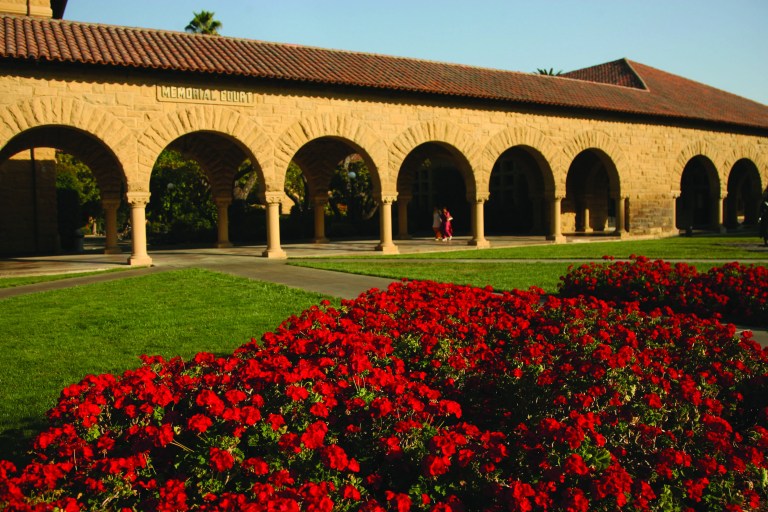This summer, the department of Maps and Records will finish laser scanning and drafting the Main Quad, a project that began earlier this year, to update the Stanford Campus Base Map, a web-based geographic system for finding information about campus lands and buildings.
Facilities Engineers Rob Donzanti and Galen Schmidt are responsible for the scanning. They use the FARO 3D laser scanner to collect the data. The device spins around while shooting lasers and collects about 200 million points. The scanner then reports the distance and color intensity of the points, and then spins again to shoot color photography. In the end, the three-dimensional scans are in full color.
Before switching to the FARO scanner, Maps and Records used a surveyor to collect one point at a time. The tedious process collected the same data as the laser scanner, but it took much more time. Another method for collecting data involves aerial photography. Jay Marianowits, Manager of CAD Services and Field Operations, said that photography is usually accurate, but is often problematic because trees can hide buildings and paths.
Last summer, the department used the laser scanning method to draft Escondido Village, which had recently been updated with new paths, but traditional surveying and aerial photography proved too difficult. The area was one of the reasons Maps and Records started using the laser scanning method in the first place.
“We were able to go in, and with the same accuracy that a surveyor could, collect everything,” Marianowits said.
The scans can also be used in the future beyond updating the Base Map. Marianowits recalled when another group used the data from Escondido Village before starting a construction project so that they could see the location of certain trees.
“We were able to supply the data without having to go back outside at all,” Marianowits said.
Current drafting of the Main Quad is “not bad, but it’s not great either,” Marianowits said. For example, they show the outlines of buildings, but not the columns in the arcades. Having a more accurate map can help for event planning in the Main Quad, where event crews often set up large tents.
“Now we’ve got survey-quality data about what the area looks like, so they don’t have to go out and hire somebody to survey,” Marianowits said.
The scanning process in the Quad is almost finished, and Field Engineer Victoria Knecht, responsible for the scan processing and drafting, has completed about a quarter of the drafting so far. The drafting process is expected to wrap up by the end of this summer.
The department is not limiting the new scanning methods to the Main Quad and Escondido Village. They have been scanning all over campus, most recently finishing scans at the new Central Energy Facility and Arrillaga Outdoor Education and Recreation Center. Eventually all of the campus will be scanned and drafted using this technology.
Contact Sarah Ortlip-Sommers at sortlip ‘at’ stanford.edu.
